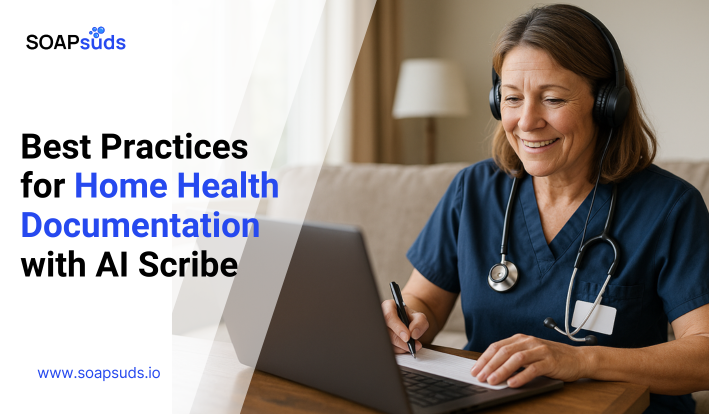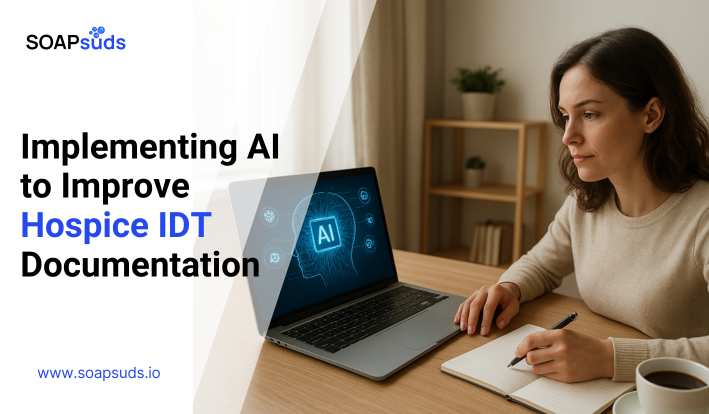What is HIPAA Compliance and How to Achieve It?
SOAPsuds team
Published: 2/25/2025
SOAPsuds team
Published: 2/25/2025

Modernizing the first step of the patient journey—patient intake—is now easier with digital...

Medical professionals balance their time between seeing patients and handling paperwork and clinical notes in...

Clinical documentation with AI Scribes plays a key role in meeting regulations, maintaining accurate billing

Paperwork burnout in therapy happens when therapists become mentally and physically drained from constant...

Applying artificial intelligence (AI) to improve hospice Interdisciplinary Team (IDT) documentation is reshaping how

Primary care doctors are saving time and improving care by documenting 30% quicker with SOAPsuds.
Clinical Notes
SOAP notes
DAP notes
AI medical notes